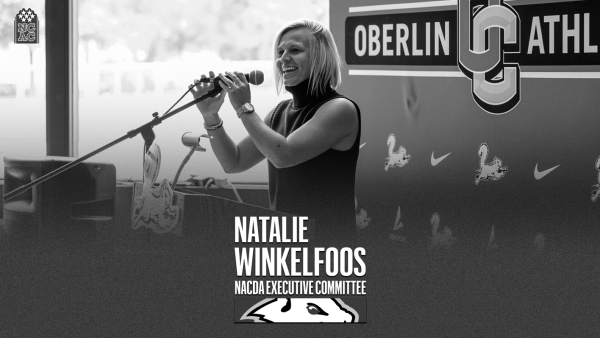Oberlin College No Stranger to Mascot Changes
In the spring of 1947, it appears that The Oberlin Review’s editors — specifically the sports editors — got bored. For reasons lost to history, they decided that Oberlin’s mascot, the Yeoman, was no longer suitable to represent the school in its athletic endeavors.
So, they decided to sponsor a vote to christen a nickname for the Yeoman that would have a little more pizazz. After a brief selection process, which involved a committee constituted of the Review’s sports editors and some faculty representatives, the nickname Crimson Knights was selected. Immediately, the Review put it into use, insisting that while the name was new, it would eventually be embraced.
“The main trouble in giving our team a new nickname is the fact that it will take quite some time, several years in fact, for the new name to sink in,” the Review wrote in its May 2, 1947 issue. “However, in several years, the name should be more permanent in Oberlin.”
The Review staff argued that the performance of Oberlin’s sports teams was paramount to what they were called — as long as the Crimson Knights brought home wins, community members shouldn’t be so deeply invested in its nickname.
“We have been told that ‘Crimson Knights’ is clumsy, ridiculous, and ostentatious; however, no one accuses the nicknames of the Duke ‘Blue Devils,’ the Alabama ‘Crimson Tide’ or the Notre Dame ‘Fighting Irish’ of impropriety,” the Review wrote on May 16, 1947. “Teams which win games make any name sound good, whereas poor teams will make any name sound foolish.”
Within a matter of weeks, the nickname change ignited backlash of a scale not often seen, even on Oberlin’s contentious post-WWII campus. Many rejected the new nickname as forced, contending that it did not represent Oberlin’s core commitment to the union of learning and labor.
“‘Crimson Knights’ sounds altogether too gaudy and out of keeping with the tone of Oberlin,” read a letter to the editor, published June 6, 1947 and signed by 23 students. “This hackneyed epitaph shows no originality; hundreds of schools employ either one or the other of these seedy names.”
“Oberlin is a distinct entity among American colleges and universities,” the letter continued. “She has a reputation of her own, well known for a sturdy individuality and sound liberal character. Must she resort to trite terms to designate her teams? Hell, no! This isn’t a big horn-tooting factory that turns out stereotyped individuals to be swallowed up in the mob; neither should the name of her sports teams be ‘base, common, and popular.’”
The letter was published after the Review reported on June 3 that the Student Council had announced an all-student referendum to decide the issue democratically. A headline in the June 3 issue read, “Dissatisfaction with ‘Knights’ Brings Action.”
While Oberlin’s sports teams enjoyed great success earlier in their history, by the 1940s student apathy toward athletics appeared to mirror the levels of today’s student population. Still, 1,277 students participated in the referendum, according to the Review, and overwhelmingly reinstated the Yeoman as the College mascot.
Nowadays, when the turnout for Student Senate elections regularly just scrapes over 20 percent, the level of campus engagement in 1947 is mind-boggling by comparison. A student at the time remarked, “It’s the most interest I’ve seen in athletics since I’ve been here.”
The Review staff, which had originally complained that none of the students opposed to the name change had participated in the original contest, didn’t press the issue further.
“The Review, which initiated the search for a new team name several months ago, bows as gracefully as possible to the expression of student opinion and withdraws from what a cursory glance would reveal to be an untenable position,” they wrote on June 10, 1947.
However, just this past year, the Oberlin Athletics Department added a new mascot, one that would represent the school along with the Yeomen: Yeobie the albino squirrel. While the albino squirrel has been a symbol used to represent the college since the 1970s, it has been inaugurated as an essential representative of collegiate athletics through the new Birkenstock-wearing, red-eyed albino squirrel mascot costume.
While the decision to introduce the albino squirrel was not decided democratically, the naming process was. OC Athletics reported that over 400 name submissions were submitted, about 14 percent of the College and Conservatory population, another example of surprisingly large student engagement. Eventually a vote took place to determine that the mascot’s name should be “Yeobie.”
Whether it be 1947 or 2019, Oberlin students hope to be represented by something that is both unique and slightly off-beat, just like the essence of the student body itself. are constantly focusing and work- ing on their athleticism through rain, snow, and extreme heat, all year around.





